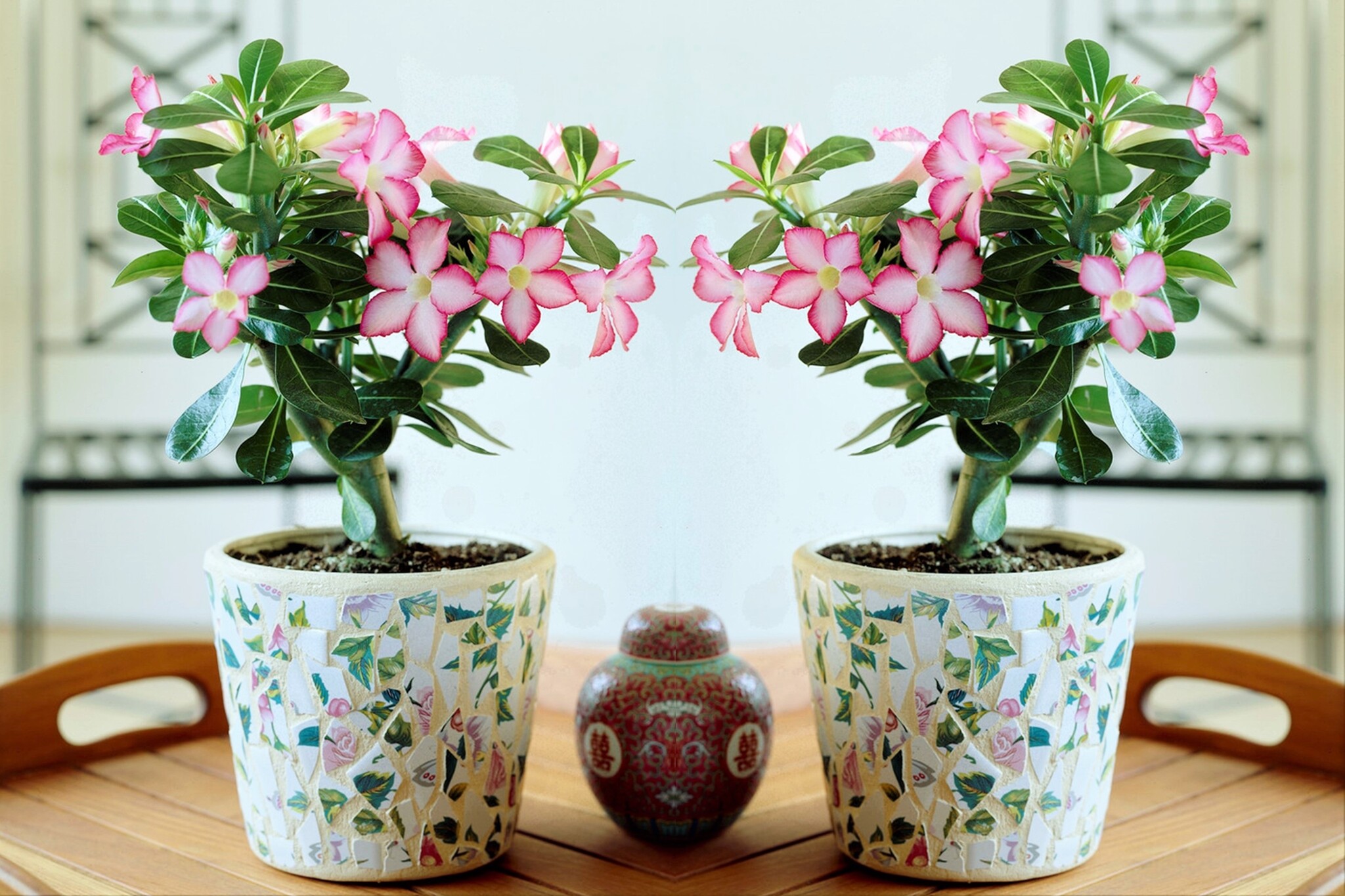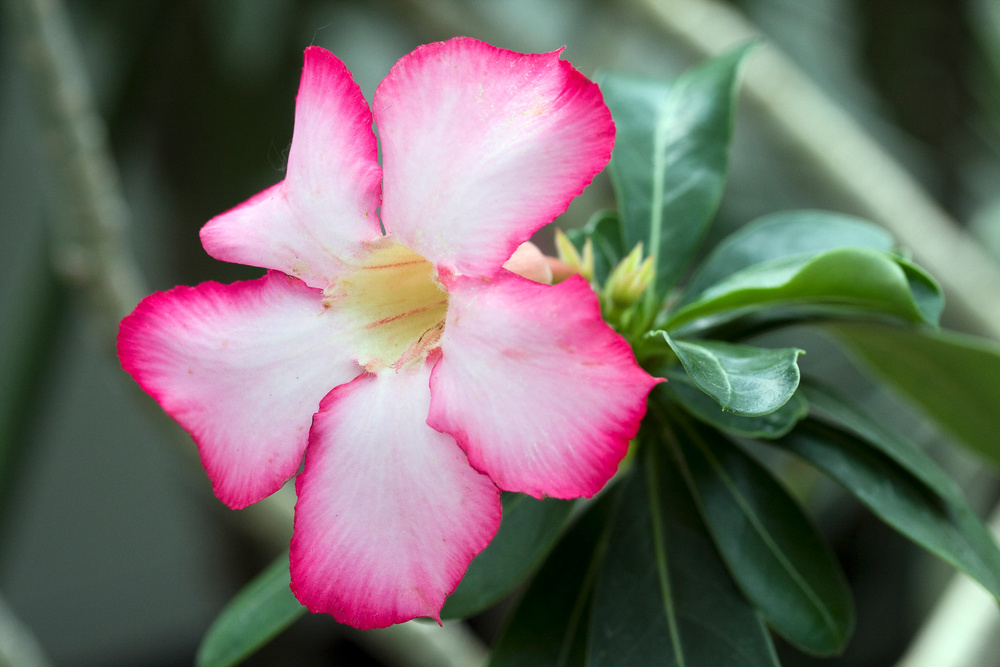
Adenium Information & tips - Plant Guide
- Moderate watering, allowing the soil to dry between waterings.
- Full sun is ideal for Adenium.
- Limited air-purifying qualities.
- Use balanced fertilizer during the growing season (spring and summer), reduce in winter.
- Potentially toxic to pets, so keep them away.
- Repot as needed, typically every few years, using well-draining soil.

Introduction
The Adenium plant, commonly known as the Desert Rose, is a striking and unique succulent that has captured the hearts of plant enthusiasts worldwide. Its elegant appearance and minimal care requirements make it a popular choice for both beginners and experienced gardeners. In this article, we will explore the key aspects of caring for this remarkable plant, including its ideal growing conditions, watering needs, feeding requirements, repotting guidelines, and its fascinating origin.
Location Matters: The Right Spot for Your Adenium
To cultivate a thriving Adenium, selecting the right location is crucial. These plants are native to arid regions of Africa and the Middle East, so they thrive in full sunlight. Ensure your Desert Rose receives at least 6 to 8 hours of direct sunlight daily. Placing it near a south or west-facing window or in a sun-drenched outdoor spot will help it flourish. In regions with exceptionally hot summers, some light afternoon shade might be beneficial to protect the plant from scorching.
Quenching the Thirst of the Desert Rose: Watering
One of the most common mistakes made with Adeniums is overwatering. These succulents have adapted to survive in arid environments, so they prefer to dry out between waterings. Water your Desert Rose thoroughly, allowing excess water to drain from the pot's bottom. Then, wait until the top 1-2 inches of soil are completely dry before watering again. The frequency of watering depends on factors like temperature, humidity, and pot size. During the growing season (spring and summer), you may need to water more frequently, while in the dormant period (fall and winter), reduce watering significantly. Always remember that it's better to underwater than overwater your Adenium.
Fueling Growth: The Right Nutrients
To ensure your Desert Rose remains vibrant and healthy, proper feeding is essential. During the active growing season, which typically spans from spring through summer, use a balanced, water-soluble fertilizer with a higher phosphorus content. Phosphorus is crucial for flowering and root development, making it ideal for Adeniums. Dilute the fertilizer to half or quarter strength and apply it every 2-4 weeks. However, avoid fertilizing during the dormant period, as the plant's nutrient needs decrease during this time.
Repotting Adenium: A Refresh for Your Desert Beauty
As your Desert Rose matures, you may find it necessary to repot it to provide more space for root growth and maintain its health. Typically, repotting every 2-3 years is sufficient. Choose a well-draining potting mix, specifically designed for succulents or cacti. When repotting, gently remove the plant from its current container, shake off excess soil, and inspect the roots. Trim any damaged or rotting roots and place the Adenium in its new pot. Ensure the new pot has drainage holes, as waterlogged soil can be fatal to these plants. After repotting, refrain from watering for a week or so to allow the plant to recover and adjust to its new home.
The Origins of the Desert Rose: A Story of Survival
The Adenium plant has a captivating origin deeply rooted in arid regions. It is native to areas of Africa, including the Sahel region, the Arabian Peninsula, and parts of the Indian subcontinent. These regions are characterized by extreme heat and limited water resources, which have shaped the Adenium into the resilient succulent we know today.
Adeniums have adapted to thrive in these harsh conditions by developing unique characteristics. They store water in their swollen trunks and branches, which helps them endure long periods of drought. Their striking, trumpet-shaped flowers serve as a beacon for pollinators in the arid landscapes they inhabit.
In some cultures, Adeniums hold special significance. For example, in East Africa, they are often planted near homes as a form of protection against evil spirits. Additionally, the plant's caudex, a thick, swollen stem, is sometimes used in traditional medicine for various purposes.
In conclusion, the Adenium, or Desert Rose, is a remarkable plant that combines stunning aesthetics with adaptability to harsh environments. To ensure its flourishing growth, place it in a sunny spot, water it sparingly, feed it appropriately during the growing season, and repot it as needed. Understanding the plant's origin adds to the appreciation of its unique beauty and resilience. With the right care and attention, your Adenium can become a prized addition to your plant collection, showcasing its breathtaking blooms year after year.

